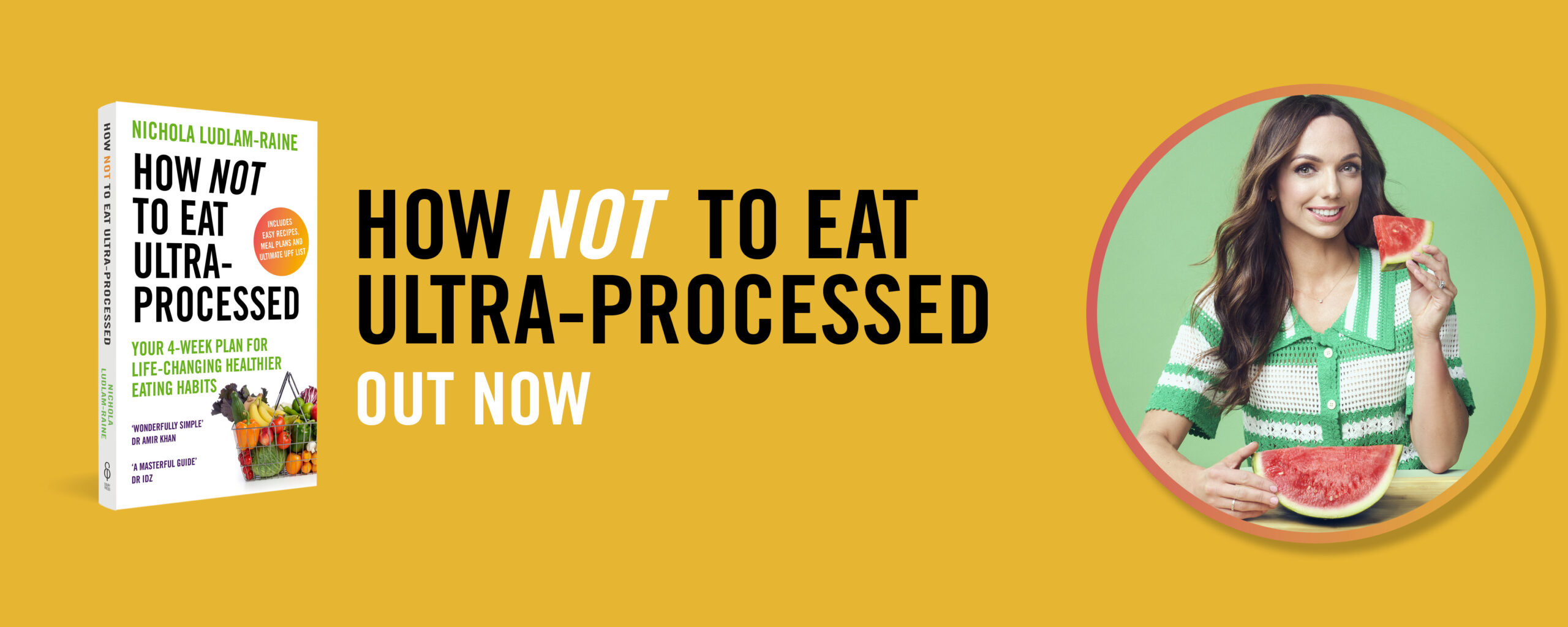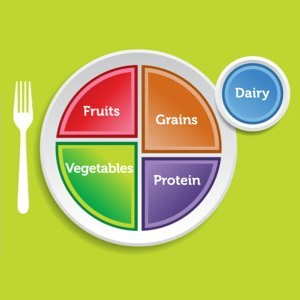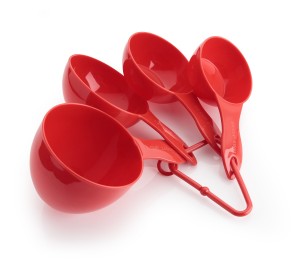
“Portion Distortion” describes how our portion sizes have become bigger over time. What we think is a ‘normal’ portion may actually be enough to feed 2 or 3 people, but thanks to large dinner plates and fast-food restaurants selling ‘super-sized’ meals we don’t realise.
Working out what a single portion is may sound tricky, but it is actually really simple! To find out my top tips on how to make sure that your meals are both balanced and appropriately portioned, carry on reading 🙂
The first thing to ask yourself is ‘is your diet balanced’ .. i.e. have you got the right balance of all of the different food groups? The food groups are:
- Fruit & Vegetables, which provide our bodies with vitamins, minerals, antioxidants, fibre and water. Fruit, vegetables and salad are low in calories and high in volume. Fruit contains natural sugar (fructose), which releases its energy slowly meaning it keeps you fuller for longer. The majority of vegetables and salads contain very small amounts of energy and so are great to fill up on, especially if you are trying to lose weight.
- How Much Should we Eat? A portion of fruit is a handful, around 80g (40g of dried fruit though). Ideally you should eat between 5 and 9 portions of fruit and vegetables a day. Aim to eat a variety of different colours, which means you will be eating a variety of different nutrients and vitamins. Fresh, frozen, juiced, canned and dried fruit and veg all count, with the exception of white potatoes (sweet potatoes do count!). If you love 100% pure fruit juice, great, but limit your intake to one small glass a day as it’s not as good as eating whole fruit. For weight maintenance you should fill 1/3 of your plate with vegetables or salad, and for weight loss you should fill up 1/2 of your plate, with fruit snacks in between or as a part of your breakfast.
- Starchy Carbs, such as granary bread, basmati rice, porridge oats and pasta provide our bodies with energy, some protein, B vitamins, minerals and fibre. Wholegrain foods such as oats protect us against the risk of heart disease and stroke, and those that are higher in fibre and less processed also have a lower glyceamic index (GI) which means that they release their energy slowly.
- How Much Should we Eat? At each meal i.e. 3 times a day, you should fill 1/3 of your plate with starchy carbs if you’re trying to maintain your weight and just under 1/4 of your plate if you’re trying to lose weight (see below for more information on portion sizes!).
- Meat, Fish & Alternative sources of Protein such as eggs, nuts, beans and pulses provide our bodies with protein, which enables our bodies to grow and repair. These foods also provide B vitamins, including vitamin B12 needed to make red blood cells and keep our nervous systems healthy, and minerals including iron, zinc and magnesium. We should choose leaner cuts of meat and healthy cooking methods such as grilling or dry roasting (minus the skin on meat!). Bulking out meals with ‘plant-based proteins’ such as lentils and beans will make your meals higher in soluble fibre which helps to lower cholesterol levels.
- How Much Should we Eat? At each main meal i.e. 2 times a day, you should fill 1/3 of your plate with protein foods if you’re trying to maintain your weight, and just over 1/4 of your plate if you’re trying to lose weight (see below for more information on portion sizes!). We should eat at least 2 portions of fish a week, 1 of which is oily e.g. salmon, fresh tuna, mackerel, pilchards or sardines as they are rich in omega 3 which helps to keep our hearts healthy. They are also a good source of vitamin D which helps the body to absorb calcium.
- Milk & Dairy Foods provide our bodies with protein, calcium, vitamin B2 (needed to turn the food we eat into energy) and vitamin A (needed for healthy eyes and also teeth). For health, adults should choose lower fat versions of dairy foods such as semi-skimmed or skimmed milk, diet/light/fat-free yogurts, cottage cheese or lighter hard cheeses.
- How Much Should we Eat? Ideally we should be eating 2-3 portions of milk and dairy foods a day. A portion is the equivalent to 1/3 pint milk, 1 small pot of yoghurt or 30g (a match-box size) of cheese.
- High Fat/Sugar Foods such as butter, oil, biscuits, cake, sweets and pastry should be eaten in moderation. Foods high in fat and sugar are high in calories which may promote weight gain. Eating too many sugary foods can also cause tooth decay. Studies show that replacing saturated fat (found in foods such as butter and the fat on meats) and trans fats (found in processed foods), with mono-unsaturated fats such as olive oil or rapeseed (vegetable) oil reduces the risk of diseases such as heart disease and cancer.
- How Much Should we Eat? If a portion of fat/sugar is 100 calories, e.g. a tablespoon of oil/butter, 1 snack sized chocolate bar or 2 plain biscuits, we should aim to eat 0-4 portions a day.. fewer if you’re trying to lose weight as there are no nutrients in these types of foods that we cannot get from other food groups.
Portion Sizes in More Detail…
If sizing foods up on your plate seems too ‘fluffy’, or if you insist on using HUGE plates, the following tips may help:
1) Look at the Label: Packaged foods such as rice, pasta and potatoes come with serving suggestions on the label, along with the calorie and nutritional stats. You should take note of these serving suggestions when preparing meals and ideally weigh out your pasta/rice etc. according to the serving suggestion and how many people you are serving before cooking. Once you’ve weighed out your food and you know what one portion looks like you could transfer it into ‘cup measurements’ using measuring cups e.g. 1 cup of pasta weighs 75g and is equal to 1 portion – this means that in future all you need to do is whip out a measuring cup instead of the scales! I personally keep a half cup measure in my oats tub (equivalent to 40g) so it makes scooping them out super quick in a morning! Overnight oats or porridge are my staple breakfast :).
2) Use your Hands:
- Use 2 open hands to guide you in selecting a healthy serving of vegetables or salad (this is a minimum.. more the better!).
- Use your fist (1 cup) to select a healthy portion of starchy carbs. Your serving of rice, potatoes or pasta should be equal to your fist.
- Use your palm to measure a healthy serving of meat, fish and alternatives. Your chicken breast or lean steak should be the size of your palm and a portion of nuts should be equivalent of a small handful.
- Include a fist-size serving of fruit with or between your meals, e.g. for dessert with a similar sized serving of fat-free yoghurt (use a small handful for dried fruit).
- Use a thumb-tip size serving (1 tsp) for fats e.g. oil/butter/mayonnaise or sugar and thumb sized serving (1-2 tbsp) for higher fat protein foods such as nut butter and hard cheeses.
Anything Else?
- Salt: Salt contains sodium and too much sodium in the diet can increase the risk of developing high blood pressure, which in turn increases the risk of stroke and heart disease. The majority of salt that we eat (75%) is already in foods. Adults should aim to have less than 6g of salt per day (1 heaped tsp). Foods high in salt contain more than 1.5g salt (0.6g sodium) per 100g, and foods low in salt contain 0.3g or less of salt (0.1g sodium) per 100g. Foods high in salt include crisps, salted nuts, bacon, ham and processed foods such as ready meals.
- Fluid: Women should drink around 1.6 litres of fluid a day and men should drink around 2 litres of fluid per day (around 8 to 10 x 200ml glasses). If you are exercising or if it’s hot you will need to drink more as you will lose more fluid through sweat. For more information check out my hydration blog post!
I really hope you find this blog post useful – I would love to know how you keep your portion sizes in check!
*This blog post contains an affiliate link. Please read my disclaimer page for more information.





Nic, how big should a plate actually be for a reasonable portion controlled main meal?
Hello! Mine is 8 inches wide for the ‘food bit’ if that helps! x
thank you!! I am re-measuring mine 🙂
No problem 🙂 glad to help!
Absolutely wonderful! Booked marked it, and wrote down all this information. You broke it down in such an easy way… Thanks again Nic!! 🙂
xx
Aw thank you 🙂 xx
Hi! This is such a useful post – thank you! Would you be able to tell me how much you would recommend one portion of quinoa is?
Thank you x
A fist size – same as the starchy carbs, although it is higher in protein 🙂 x
Thank you so much! I’ve seen loads of recipes and they all say something different so thank you 🙂 x
Is it possible to purchase the plate you have pictured in this post? If so, do you know where?
Thanks.
Hello! If you type ‘healthy portion plate’ into Amazon you will be able to find one 🙂 x